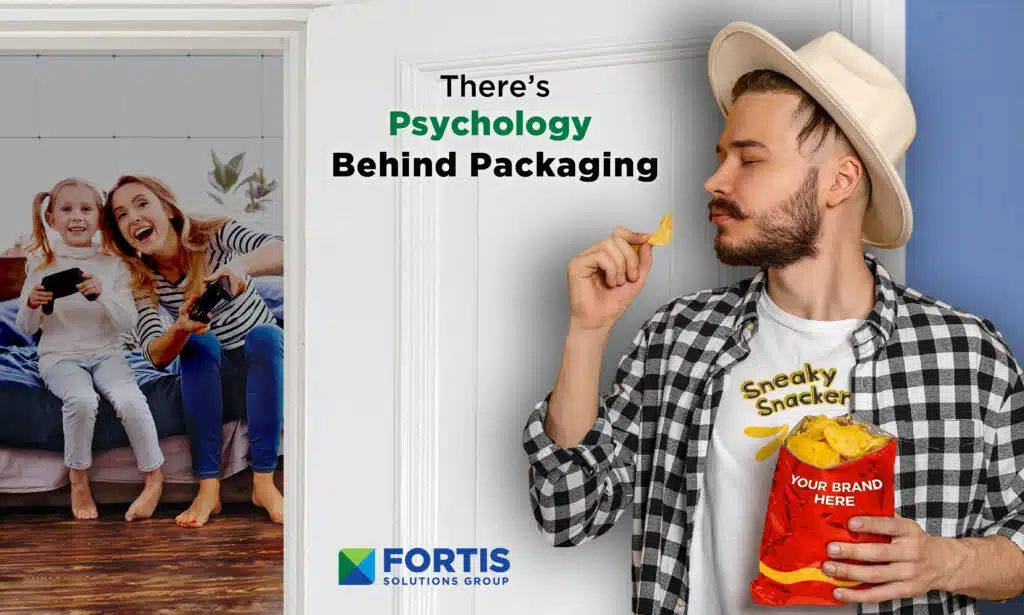
The Psychology Behind Packaging: Unwrapping Consumer Behavior
Packaging isn’t just about protecting products; it’s a critical touchpoint in the consumer experience, wielding psychological power through color, shape, material, and even sound. Let’s delve into how these elements shape consumer behavior, perception, and ultimately, sales.
The Color of Desire
- Color Psychology: Colors aren’t just visually appealing; they communicate at a subconscious level. For instance, red can evoke urgency or appetite, often used by fast-food chains like McDonald’s. Blue, on the other hand, suggests trustworthiness and serenity, perfect for tech or health brands like IBM or Dove.
- Case Study: When Tropicana changed its packaging from a traditional orange with a straw to a more modern, clean look in 2009, sales dropped significantly. Consumers didn’t recognize the new packaging, leading to a $35 million loss and a swift return to the old design. This highlights how color consistency can anchor brand identity and consumer trust.
Shapes That Sell
- Shape Psychology: The shape of packaging can influence perception of the product’s size, quality, or even its taste. Angular shapes might convey precision and efficiency, while curves suggest comfort and organic nature.
- Case Study: Pringles’ unique tube-shaped packaging not only protects the chips but also creates a memorable brand identity. This shape influences consumers to see the product as premium, contributing to higher perceived value and brand recognition.
Material Matters
- Touch and Feel: The tactile experience of packaging can convey luxury or affordability. Materials like glass or metal suggest high quality, whereas plastic might be associated with convenience or disposability.
- Case Study: Apple’s switch to thinner, lighter packaging for its products like the iPhone not only reflects the product’s sleek design but also enhances the unboxing experience, making it feel more luxurious and exclusive.
The Sound of Success
- Auditory Engagement: The sound of packaging, from the crinkle of a snack bag to the pop of a champagne cork, can influence perceptions of freshness, quality, or even the product’s premium nature.
- Case Study: The distinct sound of opening a Toblerone bar has become part of its brand experience, enhancing the perception of indulgence and quality.
Interactive Packaging
- Engagement Through Design: Packaging that invites interaction, like pull tabs, windows, or even augmented reality features, can significantly increase consumer engagement.
- Case Study: Coca-Cola’s “Share a Coke” campaign, where names were printed on bottles, not only boosted sales but also made the packaging a personal and interactive experience, turning consumers into brand ambassadors.
Sensory Synergy
When all these elements—color, shape, material, and sound—work in harmony, they create a sensory synergy that can elevate a brand far beyond its product. Here’s how:
- Perceived Value: Packaging can make a product seem more valuable, justifying a higher price point.
- Brand Loyalty: Unique and appealing packaging can foster brand loyalty by creating a memorable experience.
- Market Differentiation: In crowded markets, innovative packaging stands out, helping products to be noticed and remembered.
Packaging is a silent salesman, psychologist, and storyteller all rolled into one. By understanding and leveraging the psychological impacts of packaging design, companies can not only increase sales but also deeply connect with consumers on an emotional level. As we’ve seen with various case studies, even small changes in packaging can lead to significant shifts in consumer behavior and brand perception.
In this digital age, where physical touchpoints are becoming rarer, packaging remains one of the few tangible interactions between brand and consumer. It’s not just what’s inside that counts; how you wrap it up matters just as much. If you’re looking to visually explore these concepts further, I can generate images to complement this discussion.